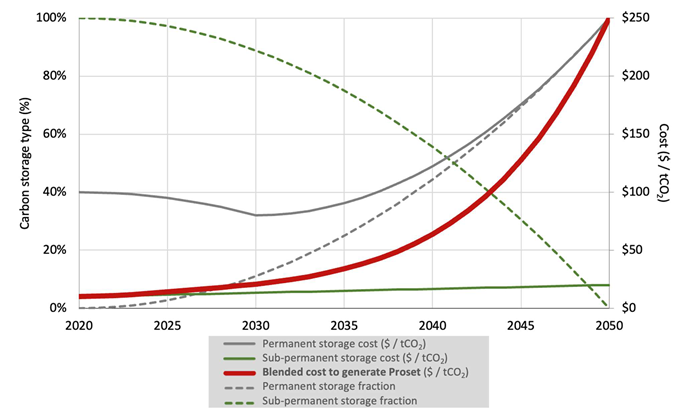In the last two years a growing number of companies announced ambitions to achieve net zero emissions across their activities and supply chains and, in many cases, some or all of the emissions associated with the use of their products. This is leading firms to turn to active enhancement of carbon sinks (nature-based solutions) or active carbon dioxide removal and storage to compensate for those emissions they cannot eliminate.
A report by the Imperial College of London addresses some of the challenges to be considered in relying on emissions compensation, focusing on the physical differences between different carbon dioxide removal and storage options. The study provides an in-depth review of the relative merits of geological versus nature-based negative emission techniques and practices, from the perspective of the private sector-oriented voluntary carbon “offset” market.
Despite their low cost and, if well designed, substantial co-benefits, there are a number of concerns with the widespread use of biological (“nature-based”) carbon removal, to offset continued fossil fuel use. One of these is the limited global capacity and potential for supporting the most ambitious climate goals. Optimistic estimates of nature-based climate solutions suggest they could shave 0.1°C off global temperatures by 2050. The high risk of physical and indirect carbon leakage is also a challenge, as well as the carbon accounting with the time trees take to grow, in addition to the implications for international and intergenerational equity.
Hence despite their low cost, these considerations introduce a substantial reputational and financial risk for any company relying on biological carbon storage to offset continued use of fossil fuels.
The widely-held view that “a tonne of CO2 is a tonne of CO2”, and that the primary distinguishing features of different carbon removal options are costs and co-benefits, is incorrect. Not all carbon removals are equal from a climate perspective, and they are primarily distinguished by the characteristics of the CO2 storage solution employed, not the removal technology.
Therefore, there is a clear need to design policy instruments that allow to take advantage of the significant opportunities for nature-based climate solutions, without undermining the case for investment in more permanent carbon storage solutions.
The study provides some policy recommendations, such as having separate quantitative targets for high-reliability carbon dioxide storage, complementing the need for separate targets for both reductions and removals in the European climate policy. It also formulates a proposal for “jointly incentivizing the development of high-potential high-reliability negative emissions technologies (typically engineered solutions) as well as limited-potential low-cost measures (such as many typical nature-based climate solutions)”.
The instrument termed as “Proset” (for Progressive Offset) is a specific approach to for the integration of nature-based and geological carbon storage in a single offsetting product, consistent with the transition to a sustainable net zero future. Proset is designed as a new form of composite offset in which the fraction of carbon allocated to geological-timescale storage options increases progressively, reaching 100% by the target net zero date, generating predictable demand for effectively permanent CO2 storage, while making the most of the near-term opportunities provided by nature-based climate solutions, all at an affordable cost to the offset purchaser. In its initial form this instrument is designed for the voluntary carbon market but analogues may have a role in compliance markets in future. The detailed proposal of Proset is detailed in a publication in second-round review with the journal Climatic Change and is available as an annex to the report.

Download the full report: Interactions and trade-offs between nature-based and engineered climate solutions


